2 Answers
### 1. **Resistors in Series**
When resistors are connected in series, the total or equivalent resistance \( R_{eq} \) is the sum of the individual resistances:
\[ R_{eq} = R_1 + R_2 + R_3 + \cdots + R_n \]
For example, if you have three resistors in series with resistances of \( 4 \ \Omega \), \( 6 \ \Omega \), and \( 10 \ \Omega \):
\[ R_{eq} = 4 \ \Omega + 6 \ \Omega + 10 \ \Omega = 20 \ \Omega \]
### 2. **Resistors in Parallel**
When resistors are connected in parallel, the reciprocal of the equivalent resistance \( R_{eq} \) is the sum of the reciprocals of the individual resistances:
\[ \frac{1}{R_{eq}} = \frac{1}{R_1} + \frac{1}{R_2} + \frac{1}{R_3} + \cdots + \frac{1}{R_n} \]
For example, if you have three resistors in parallel with resistances of \( 4 \ \Omega \), \( 6 \ \Omega \), and \( 12 \ \Omega \):
\[ \frac{1}{R_{eq}} = \frac{1}{4 \ \Omega} + \frac{1}{6 \ \Omega} + \frac{1}{12 \ \Omega} = \frac{3}{12} + \frac{2}{12} + \frac{1}{12} = \frac{6}{12} = \frac{1}{2} \]
Thus:
\[ R_{eq} = 2 \ \Omega \]
### 3. **Combination of Series and Parallel**
For circuits that have both series and parallel components, you’ll need to break down the circuit into simpler series or parallel parts, find the equivalent resistance for each part, and then combine them accordingly.
#### Example:
Consider a circuit where a \( 10 \ \Omega \) resistor is in series with a parallel combination of \( 20 \ \Omega \) and \( 30 \ \Omega \) resistors.
1. **Find the equivalent resistance of the parallel resistors:**
\[ \frac{1}{R_{parallel}} = \frac{1}{20 \ \Omega} + \frac{1}{30 \ \Omega} = \frac{3}{60} + \frac{2}{60} = \frac{5}{60} = \frac{1}{12} \]
Thus:
\[ R_{parallel} = 12 \ \Omega \]
2. **Add this result to the series resistor:**
\[ R_{eq} = 10 \ \Omega + 12 \ \Omega = 22 \ \Omega \]
By following these methods, you can determine the equivalent resistance between any two points in a circuit.
### Types of Resistor Connections
1. **Series Connection:**
- Resistors are connected end-to-end.
- The current through each resistor is the same.
- The total or equivalent resistance is the sum of all individual resistances.
\[
R_{\text{eq(series)}} = R_1 + R_2 + R_3 + \ldots + R_n
\]
For example, if three resistors \(R_1 = 2 \, \Omega\), \(R_2 = 3 \, \Omega\), and \(R_3 = 5 \, \Omega\) are in series, the equivalent resistance is:
\[
R_{\text{eq}} = 2 + 3 + 5 = 10 \, \Omega
\]
2. **Parallel Connection:**
- Resistors are connected such that each end of every resistor is connected to the same two points.
- The voltage across each resistor is the same.
- The reciprocal of the equivalent resistance is the sum of the reciprocals of all individual resistances.
\[
\frac{1}{R_{\text{eq(parallel)}}} = \frac{1}{R_1} + \frac{1}{R_2} + \frac{1}{R_3} + \ldots + \frac{1}{R_n}
\]
For example, if three resistors \(R_1 = 2 \, \Omega\), \(R_2 = 3 \, \Omega\), and \(R_3 = 6 \, \Omega\) are in parallel, the equivalent resistance is:
\[
\frac{1}{R_{\text{eq}}} = \frac{1}{2} + \frac{1}{3} + \frac{1}{6} = \frac{3}{6} + \frac{2}{6} + \frac{1}{6} = 1
\]
Therefore,
\[
R_{\text{eq}} = 1 \, \Omega
\]
3. **Combination of Series and Parallel:**
- Many practical circuits involve a combination of resistors in series and parallel.
- To find the equivalent resistance in such cases, one can simplify the circuit step-by-step by reducing series and parallel sections iteratively.
### Steps to Calculate Equivalent Resistance
1. **Identify Series and Parallel Sections:** Determine which resistors are in series and which are in parallel.
2. **Simplify Step-by-Step:** Start from the simplest parts of the circuit and reduce them to their equivalent resistances.
3. **Repeat the Process:** Continue this process until you have a single equivalent resistance for the entire circuit.
### Example Problem
Consider a circuit where \(R_1 = 4 \, \Omega\) and \(R_2 = 6 \, \Omega\) are in series, and their combination is in parallel with \(R_3 = 3 \, \Omega\).
- First, find the equivalent resistance of the series resistors:
\[
R_{1+2} = R_1 + R_2 = 4 + 6 = 10 \, \Omega
\]
- Now, this \(10 \, \Omega\) resistance is in parallel with \(R_3 = 3 \, \Omega\):
\[
\frac{1}{R_{\text{eq}}} = \frac{1}{R_{1+2}} + \frac{1}{R_3} = \frac{1}{10} + \frac{1}{3}
\]
\[
\frac{1}{R_{\text{eq}}} = \frac{3}{30} + \frac{10}{30} = \frac{13}{30}
\]
\[
R_{\text{eq}} = \frac{30}{13} \approx 2.31 \, \Omega
\]
Therefore, the equivalent resistance between the two points in this circuit is approximately \(2.31 \, \Omega\).
### Conclusion
Calculating the equivalent resistance between two points in a circuit involves understanding the configuration of the resistors. The steps include identifying which resistors are in series or parallel and simplifying the circuit step-by-step. This concept is fundamental in circuit analysis and is widely used in electrical engineering and physics.

Applied Physics
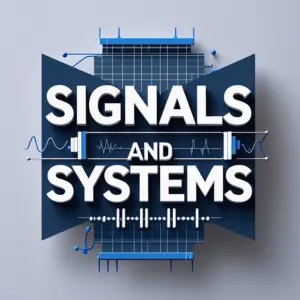
Signals and Systems

Digital Electronics
Basic Concepts
Basic Laws
Units
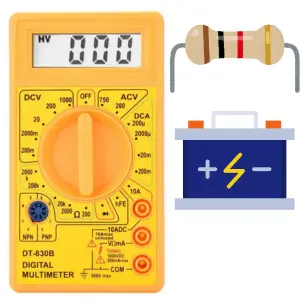
Ohmic Resistors
Capacitors and Inductors
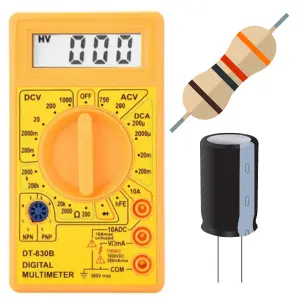
RC Circuit
First-Order Circuits
Second-Order Circuits
Principles Of Circuit Analysis
Sinusoids and Phasors
AC Steady-State Analysis
Single Phase A.C. Circuits
Three-Phase Circuits
Resonance In Series And Parallel Circuits
Network Theorems
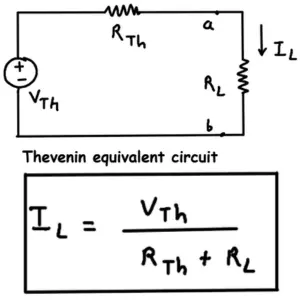
Thevenin's Theorem
Two-port Networks
Digital Electronics

Oscilloscope
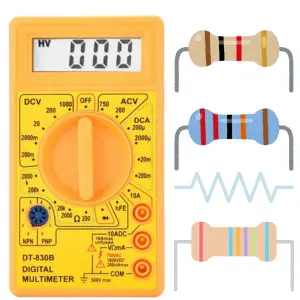
Ohmmeter
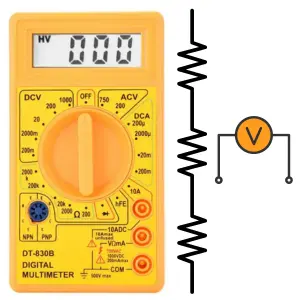
Voltmeter
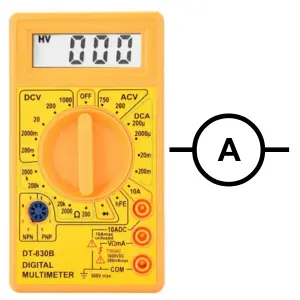
Ammeter

Induction Motor

Transformer
Operational Amplifiers
Components
Symbols
Formulas
EE Notes
EE Dictionary

MCQ Quiz

Interview Q&A
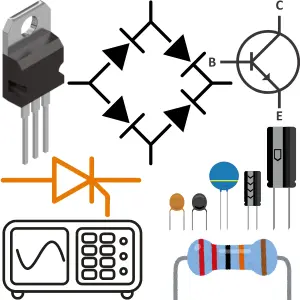
Power Electronics Book
Advanced Calculator
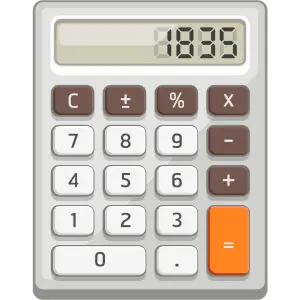
Basic Calculator

Simulator
Videos
Q&A
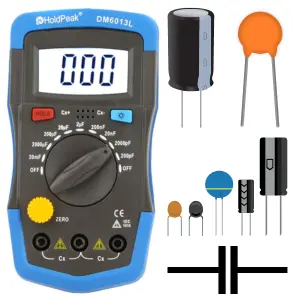
Capacitance Meter
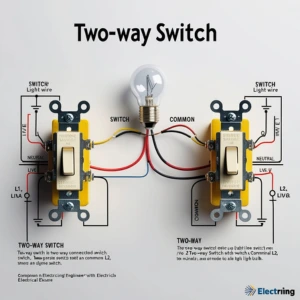
Two Way Switch
Electrical Machines
Power Electronics

Electrical Drives & Their Control

Electrical Safety & Standards

Basics of Electronics Engineering

Electromagnetic Fields

Electrical Machines

More Items Coming Soon...